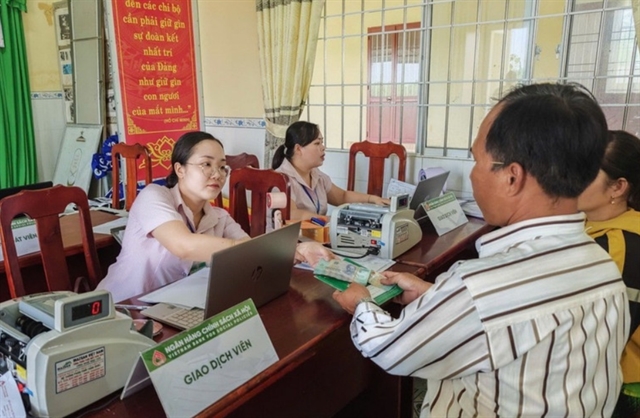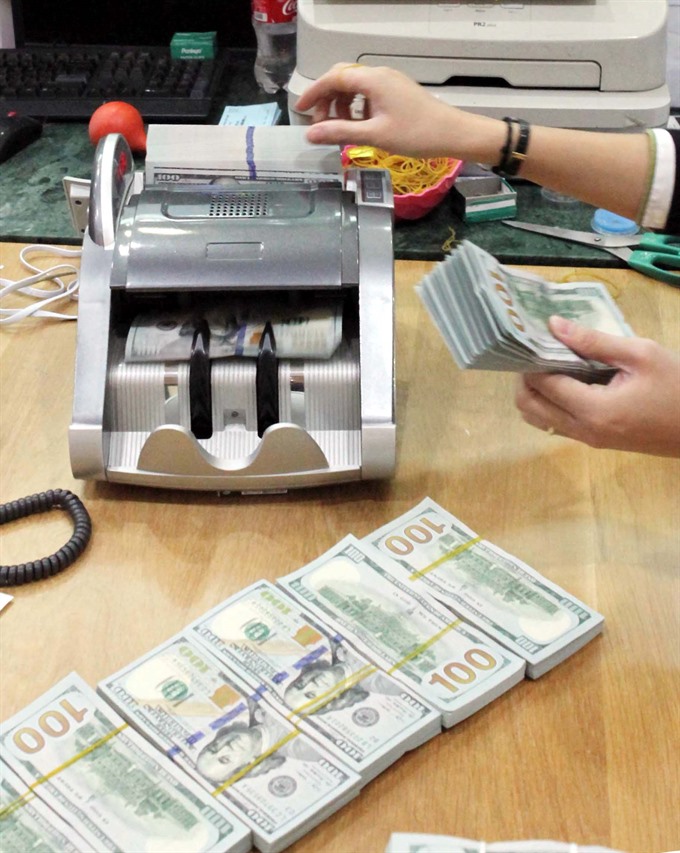 Economy
Economy

The State Bank of Việt Nam’s transaction centre this week raised the reference buying rate for the US dollar by VNĐ50 to VNĐ22,725, revealing its intention to expand foreign reserves.
 |
| The State Bank of Việt Nam’s transaction centre this week raised the reference buying rate for the US dollar by VNĐ50 to VNĐ22,725. — VNA/VNS Photo Trần Việt |
HÀ NỘI — The State Bank of Việt Nam’s transaction centre this week raised the reference buying rate for the US dollar by VNĐ50 to VNĐ22,725, revealing its intention to expand foreign reserves.
This is the third time this year it has increased the buying rate for the greenback. The first two hikes were made in January and April with a total increase of VNĐ100.
With the rise, the value of the dollar against the đồng listed at SBV’s centre is some VNĐ70 higher than that of commercial banks.
On Thursday, Vietcombank and BIDV maintained both buying and selling rates unchanged from Wednesday at VNĐ22,690 and VNĐ22,760.
The rates at Techcombank were VNĐ22,650 (buying) and VNĐ22,770 (selling), the same as those on Wednesday.
After increasing the daily reference đồng/dollar exchange rate by VNĐ18 on the first three days of the week, SBV on Thursday continuously adjusted the rate up by five đồng from the previous day to VNĐ22,433.
With the current trading band of +/- 3 per cent, the ceiling rate applied to commercial banks during the day was VNĐ23,105 and the floor rate was VNĐ21,760 per dollar.
According to analysts, the buying rate hike by SBV’s transaction centre is aimed at encouraging commercial banks to buy dollars from the currency holders at higher prices. The banks will then sell dollars to SBV’s centre, helping the central bank expand its foreign reserves to prepare for any fluctuation that may occur if the US Federal Reserve (Fed) increases interest rates.
Last week, the Fed raised the interest rate by 0.25 percentage points. This was Fed’s third consecutive interest rate hike in six months. Surprisingly, following the Fed’s move, the domestic foreign currency market remained stable.
According to banking expert Cấn Văn Lực, there were some reasons for this stability.
Apart from the fact that world financial markets witnessed no fluctuation, SBV’s flexible central rate management mechanism helps the domestic foreign exchange market be less affected by foreign factors.
Besides this, the domestic supply-demand relationship of the dollar is relatively stable. The foreign currency supply from exports, FDI, ODA disbursement, tourism and remittances has grown positively in the first five months, Lực said.
Although there was no impact on the exchange rate following the Fed’s decision, experts said pressure on exchange rate is likely, which comes from both sides -- serious trade deficit and strong increase in foreign currency loans.
Ngô Đăng Khoa, head of trading at HSBC Vietnam, told Đầu tư (Vietnam Investment Review) that the trade balance runs a deficit of some $2.5 billion since the beginning of this year and is likely to expand to $7 billion at the end of the year, which will put certain pressure on the exchange rate at some point.
Khoa recommended that even in case activities are undertaken to prevent interest rate and exchange rate risks, businesses should still monitor the market and use reasonable risk prevention methods. — VNS



